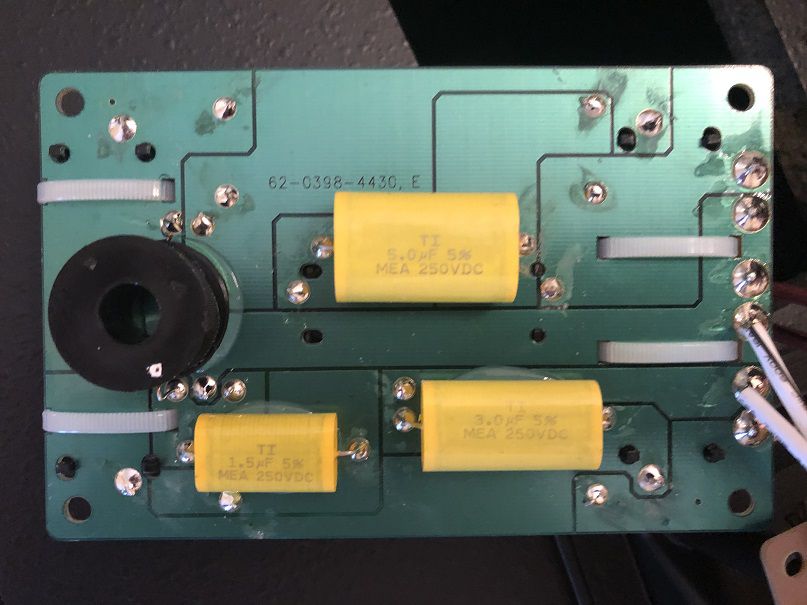
net-david
-
Posts
8 -
Joined
-
Last visited
Content Type
Forums
Events
Gallery
Posts posted by net-david
-
-
1 hour ago, radiogram said:
@net-davidIt appears to be the first version as the date is Sep 2005. Could you tell me how to contact Trey Cannon so I can get circa 2009 schematics?
Thanks Again
Trey was who responded when I contacted Klipsch support through their website, the email was from support@klipsch.com .
-
2 hours ago, radiogram said:
@net-davidThe other thing I request you is to re-check is the polarity of K53Ti. In CWIII it is reversed compared with Woofer & Tweeter. But not so as per your observation.
Thanks
Sorry, I did not actually check polarity to the drivers, I'll go back and do it.
-
I did some quick and dirty measurements of my Heresy III's crossover last night and I think I have all of the values now. By quick and dirty I mean I unscrewed the crossover but left all of the drivers connected, I could hear the 1kHz tone my B&K LCR meter uses through the speaker while testing. So I'm not really confident on the inductor values. I'm pretty sure of the C and R values, I got them off of the components. I've left the component numbers from Xsim on the schematic this time so we can discuss them easily. I think the topology is correct, I've gone back and double checked everything.
-
 1
1
-
-
-
@radiogram, I think the values I have on the diagram are correct, here are the pictures I was working from. I'm not certain measuring the inductors in circuit will work because of the topology, but I'll give it a try.
-








Bellari EQ570 Analog EQ Measurements
in 2-Channel Home Audio
Posted
I believe the Bellari SE560 is more like the BBE Sonic Maximizer. I am somewhat of a fan of the BBE process, I bought the SE560 to try vs a vintage BBE 2002R and 1002. Very simplified (and possibly wrong), the BBE process divides audio into 3 frequency ranges and applies phase change/delay then mixes it all back together.